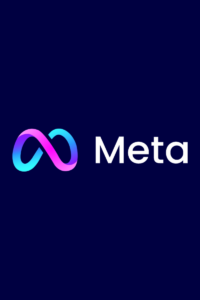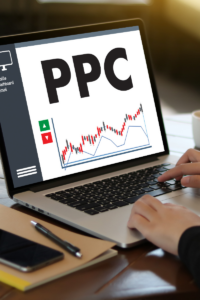New Social Media Platforms in 2025: What You Need to Know
Social media continues to evolve at an unprecedented pace, with 5.22 billion people—63.8% of the global population—actively engaging on these platforms. Changing user preferences, rapid technological advancements, and geopolitical events, such as platform bans, are transforming the digital landscape.
For businesses and individuals alike, staying ahead of these changes is no longer optional—it’s essential. From the rise of decentralized networks offering greater user control to the ripple effects of TikTok’s ban in several regions, the social media landscape is undergoing a transformation. In this blog, we’ll explore the latest platforms, unpack the impact of global shifts, and provide insights to help you stay ahead in 2025.
Understanding the Potential TikTok Ban
RedNote: Revolutionizing Short-From Content
One of the breakout stars of 2025 is RedNote, a platform that combines music discovery with short-form video. RedNote allows users to create 30-second clips synced with emerging artists’ tracks, offering a fresh approach to content creation. This unique focus on supporting independent musicians has made RedNote particularly popular among Gen Z and Millennials. Some key features of this app include:
- Music Integration: Exclusive partnerships with independent labels allow users to access a library of unreleased and trending tracks.
- Collaborative Content: Users can collaborate on videos, fostering community-driven creativity.
- Built-in Monetization: RedNote offers revenue-sharing options for creators and musicians, making it an attractive platform for monetization.
RedNote presents an exciting opportunity for brands to engage with younger audiences through influencer partnerships and music-driven campaigns. As more users migrate from TikTok, RedNote’s growth trajectory shows no signs of slowing down.
Bluesky: Decentralizing Social Media
Bluesky, a decentralized social media platform backed by Twitter co-founder Jack Dorsey, is gaining significant momentum in 2025. Designed to address censorship, data ownership, and algorithmic transparency issues, Bluesky offers users greater control over their online experience.
Why Bluesky Matters:
- Decentralized Protocol: Bluesky operates on the AT Protocol, allowing users to seamlessly migrate their data and followers between platforms.
- Customizable Algorithms: Unlike traditional platforms, Bluesky lets users choose or build their algorithms, tailoring their feeds to their preferences.
- Privacy-Centric Approach: With data privacy concerns at an all-time high, Bluesky’s commitment to user ownership and minimal data collection sets it apart.
For brands and creators, Bluesky’s decentralization offers new opportunities to build authentic, community-driven engagement without being at the mercy of opaque algorithms. Bluesky’s user base is expanding rapidly as more users become wary of traditional platforms.
Other Platforms to Watch
While RedNote and Bluesky are leading the charge, several other platforms are making significant updates to stay relevant in the ever-evolving social media landscape. Among them, Meta remains a powerhouse, introducing groundbreaking features to solidify its position in the market.
Meta, the parent company of Facebook and Instagram, continues to push boundaries in 2025 with new features to foster deeper connections and enhanced user experiences. As the company doubles down on augmented reality (AR), virtual reality (VR), and the metaverse, it’s clear that Meta aims to redefine how users interact online. Here’s how:
- AI-Powered Tools: Meta is rolling out advanced AI tools for content creation, including automated caption generation, personalized ad targeting, and real-time video editing features.
- Enhanced Reels Features: Instagram Reels now includes expanded editing options, trending content recommendations, and monetization opportunities for creators, allowing them to compete directly with newer platforms like RedNote.
- Privacy-Centric Updates: Responding to user demand, Meta has introduced more granular privacy controls across all platforms, giving users greater control over their data and ad preferences.
Meta remains an essential platform for businesses and creators. Its continuous innovations in content creation, monetization, and virtual experiences help ensure that it remains a critical component of any social media strategy.
Adapting to the New Social Media Era 
The shifting social media landscape in 2025 demands adaptability and a forward-thinking approach. Here are some strategies for navigating the new platforms effectively:
1. Diversify Your Presence: As TikTok’s future hangs in the balance, diversifying across new platforms and taking advantage of new Meta updates is key. Expanding your presence helps ensure you mitigate risks and connect with varied audiences.
2. Embrace Decentralization: Platforms like Bluesky are leading the charge in decentralized social media. Engaging with these platforms early can help brands build trust and establish themselves as pioneers.
3. Prioritize Privacy and Transparency: As users become more concerned about data privacy, platforms prioritizing transparency will continue to thrive. Businesses should align their values with these priorities to foster trust.
How Onimod Global Can Help
At Onimod Global, we understand that the ever-changing social media landscape can be exciting and challenging. Our team of social media experts is dedicated to helping businesses navigate these changes with cutting-edge strategies. We stay ahead of the curve by constantly monitoring trends like the rise of new platforms, the impact of geopolitical shifts, and the adoption of blockchain and virtual reality. Whether leveraging new platforms to reach younger audiences or tapping into the privacy-conscious user base, our approach helps your brand remain relevant and impactful.
What We Offer:
- Platform-Specific Strategies: Customized campaigns that align with emerging platforms’ unique features and audiences.
- Trend-Driven Insights: Ongoing analysis of social media trends to help ensure your strategy evolves with the market.
- Comprehensive Campaign Management: We handle every aspect of your social media presence, from content creation to performance tracking.
- Data-Driven Solutions: We use advanced analytics to maximize your ROI and optimize your campaigns for success.
The future of social media is bright, but navigating it requires expertise and agility. Partner with our digital marketing experts to help ensure your social media strategy keeps up with an evolving environment.
Contact us today to learn how we can take your social media marketing to the next level.
FAQs: Navigating New Social Media Platforms in 2025
Why was there a TikTok blackout?
TikTok may still be here, but its future in the U.S. remains uncertain. President Trump has signed an executive order to suspend the ban for 75 days until the U.S. finds a buyer. To help businesses and creators navigate the challenges posed by the TikTok ban, adopting a proactive, data-driven strategy is key. This includes diversifying platforms, creating a resilient digital ecosystem, and prioritizing sustainable, long-term growth. For the latest updates on legislation impacting TikTok’s availability in the U.S., stay informed through trusted sources such as:
How is RedNote different from TikTok?
RedNote, a Shanghai-based company, sets itself apart by focusing on music discovery and short-form content with a strong emphasis on collaboration. Unlike TikTok, RedNote prioritizes supporting independent musicians, offering a platform for creative partnerships. It also features built-in monetization tools, empowering creators and artists to earn directly from their content.
What makes Bluesky unique compared to traditional platforms?
Bluesky sets itself apart from traditional platforms like X by offering a decentralized structure, customizable algorithms, and greater user control over data. Unlike X, which operates on a centralized framework, it relies heavily on algorithmic feeds chosen by the platform. Bluesky empowers users to tailor their online experience.
Should businesses start using these new platforms?
Diversifying your presence on platforms like RedNote and Bluesky can help you reach new audiences and mitigate the risks of relying on a single platform. Working with Onimod Global can help determine which platform best suits your business needs.






